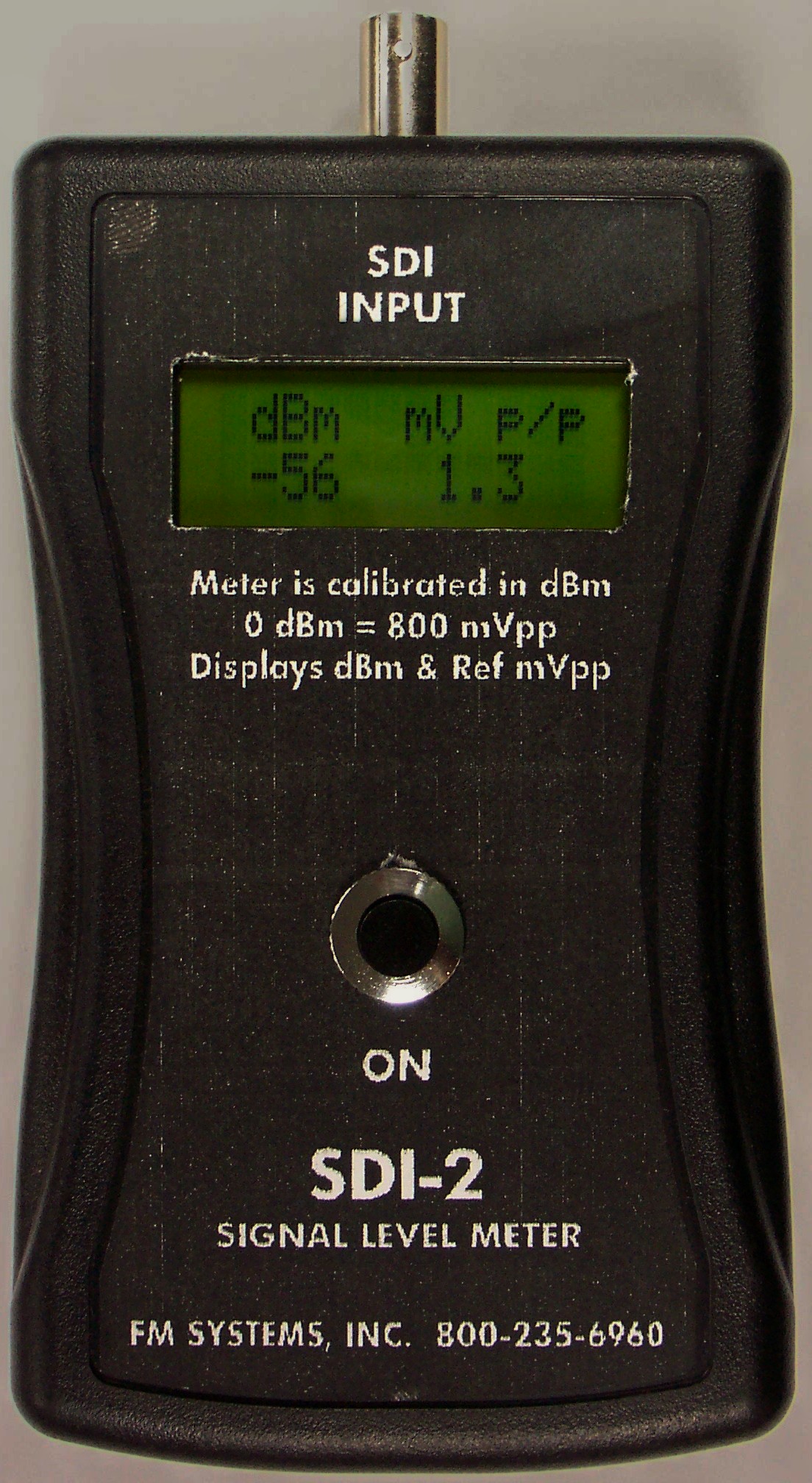SDI LEVEL CONVERSION TABLE
By: Don McClatchie
The SDI (Serial Digital Interface) signals used in the Broadcasting Industry and the CCTV Industry have a set of standards that dictate the SDI level, frequency bandwidth, data rate, and many other requirements for good data delivery. This data format uses an un-balanced 75 Ohm transmission system with BNC type connectors. This format is a great advantage to those industries making a conversion from Base-Band Video to digital video. It is this format that allows the installer to use the same coaxial cable once used for the analog video in the new digital video installation.
The level standard for SDI digital video is 0dBm or approximately 800 mV as measured Peak to Peak. I say approximately because the signal conversion is almost the same but fractionally different. The standard rounds it up to 800 mVpp because round numbers are easier to use in practice. This table shows the relationship between dBm and mVpp and covers the normal range of measurements based on the 800 mVpp = 0dBm SDI standard.
dBm millivolts dBm millivolts dBm millivolts dBm millivolts
+10 2530 -9 284 -23 1.8 -47 3.6
+9 2255 -10 253 -29 28.4 -48 3.2
+8 2010 -11 226 -30 25.3 -49 2.8
+7 1791 -12 201 -31 22.5 -50 2.5
+6 1600 -13 179 -32 20.1 -51 2.3
+5 1423 -14 160 -33 17.9 -52 2.0
+4 1268 -15 142 -34 16.0 -53 1.8
+3 1130 -16 127 -35 14.2 -54 1.6
+2 1007 -17 113 -36 12.7 -55 1.4
+1 898 -18 101 -37 11.3 -56 1.3
0 800 -19 89.8 -38 10.1 -57 1.1
-1 713 -20 80.0 -39 9.0 -58 1.0
-2 636 -21 71.3 -40 8.0 -59 0.90
-3 566 -22 63.5 -41 7.1 -60 0.80
-4 505 -23 56.6 -42 6.4 -61 0.71
-5 450 -24 50.5 -43 5.7 -62 0.64
-6 400 -25 45.0 -44 5.0 -63 0.57
-7 357 -26 40.1 -45 4.5 -64 0.50
-8 319 -27 35.7 -46 4.0 -65 0.45
This is the formula that is used to arrive at these numbers:
0.800 x antilog (—————–) = mVpp
Take the dBm number you wish to convert with the correct sign, and divide it by 20, then antilog/base 10 the number, this gives you the voltage ratio of the dBm number. Then multiply the number by 0.800 the standard for 0 dBm and the answer is the amount of millivolts that is equal to the dBm level.

Direct measurements of the SDI signal can be made with the SDI-2 level meter. It is a hand-held battery operated meter that measures the dBm level of any SDI video signal. It can be used on any digital signal with a bit rate at or below 1.485 Gigabit. You can see this meter at: fmsystems-inc.com in the test meter section.


